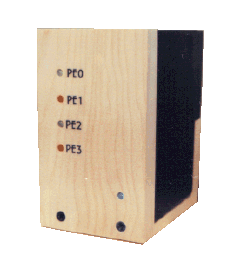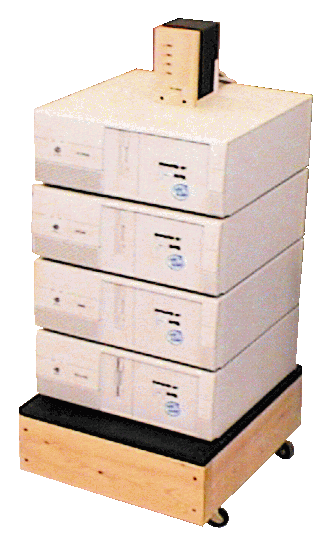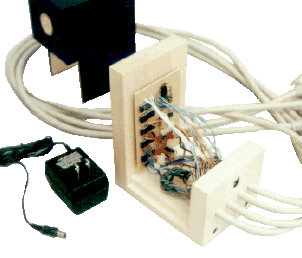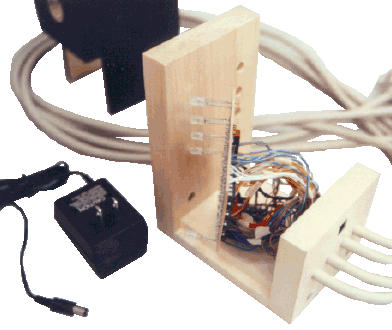

This is first the unit we've been building in significant quantity and supporting as a full public domain hardware design and support software release.
Basically, this version of PAPERS is just like the second TTL PAPERS unit, except:
Although the particular box pictured above is made out of Aspen, other copies have front and rear panels made out of Oak, Cherry, Walnut, Poplar, Pine, and Mahogany. Incidentally, although the PE numbering is arbitrary, the unit shown in the above photo has the display numbered with higher PE numbers corresponding to lower positions on the panel, which is the reverse of our "standard" numbering.
We are using this version of TTL_PAPERS for our permanent clusters. For example, the following photo shows our first Pentium cluster. These machines were donated in Summer 1995 by Intel specifically for the PAPERS project. Each holds a Pentium 90, 32M RAM, and 700M disk.

Since other people at other places also have been building this type of TTL_PAPERS unit, (e.g., Prof. Will Cohen has built one at the University of Alabama at Huntsville), it is useful to take a closer look at some of the construction details for TTL_PAPERS. The back of the box is....

From this view, you can see the power and cable connections on the rear panel. Opening the box....

This photograph reveals the construction of the box itself as well as the installation of the circuit board and cable connections. Notice that all the signal ground connections are made by mechanically connecting and soldering directly to a common ground post in the base of the unit -- this both provides a better electrical ground and a solid physical connection to help ensure that the cables will not pull out (this type of ground connection was used on all but PAPERS0 and PAPERS1). Partially removing the board....

If you back the board away from the front panel, you can see how the LEDs are mounted on the "wrong side" of the board and how they fit into the front panel mounting holes. In fact, this fit is generally tight enough that no separate mounting hardware is needed to attach the board to the box.